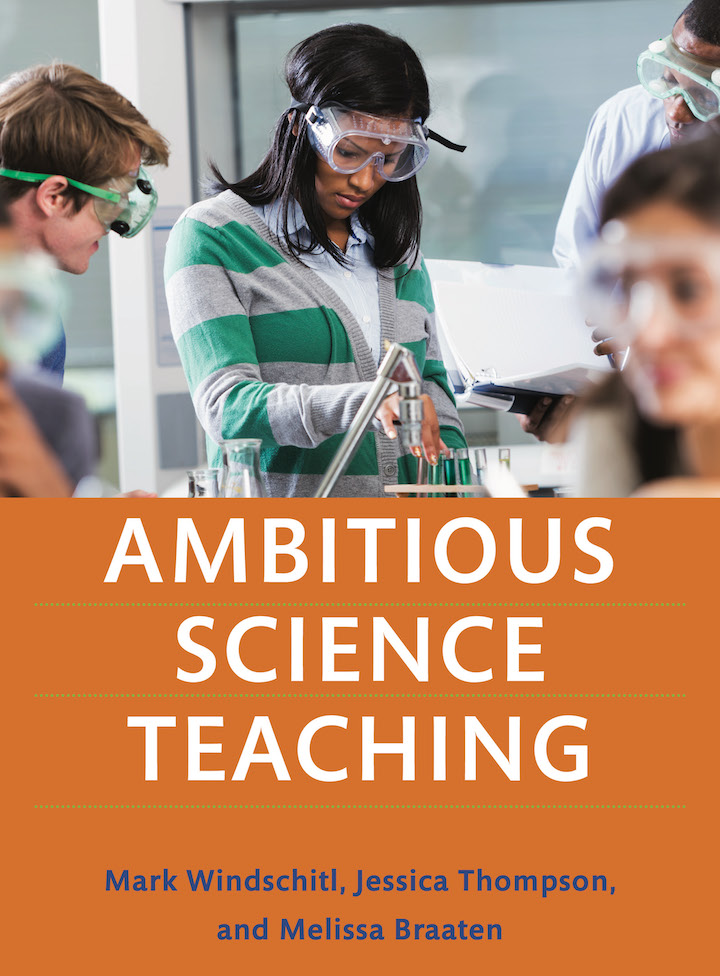If you are interested in changing your classroom discourse, anchoring your instructional units in puzzling phenomena, or engaging students in scientific practices such as modeling, evidence-based explanation, or augmentation this is the source. If you want to see how to make classroom more relevant and equitable for all learners while upping the rigor, this book will show you how.
Check out twitter: #AmbScienceTeach
Here’s the link to order: Harvard Ed Press
And here’s the table of contents:
Chapter 1 A Vision of Ambitious Science Teaching
Chapter 2 Core Practice Set #1
Planning for Engagement with Big Science Ideas
Chapter 3 Productive Discourse, Part I
Talk as a Tool for Learning
Chapter 4 Productive Discourse, Part 2
Encouraging More Students to Participate in Talk
Chapter 5 Core Practice Set #2
Eliciting Students’ Ideas
Chapter 6 Modeling, Part 1
Making Thinking Visible Through Models
Chapter 7 Modeling, Part 2
Allowing Students to Show What They Know
Chapter 8 Core Practice Set #3
Supporting On-going Changes in Thinking: Introducing New Ideas
Chapter 9 Core Practice Set #3
Supporting On-going Changes in Thinking: Activity and Sense-making
Chapter 10 Core Practice Set #3
Supporting On-going Changes in Thinking: Collective Thinking
Chapter 11 Scientific Argument
Making and Justifying Claims in a Science Community
Chapter 12 Core Practice Set #4
Drawing Together Evidence-based Explanations
Chapter 13 Organizing with Colleagues to Improve Teaching
Chapter 14 Can We Be Ambitious Every Day?
Appendices
Appendix A. Coherence Between AST and Professional Standards for Practice
Appendix B. Reminding Ourselves of the Bigger Picture of Instruction
Appendix C. Taxonomy of Tools
Appendix D. How to Help Students Understand the “What-How-Why” Levels of Explanation
Appendix E. Rapid Survey of Student Thinking (RSST) Tool
Appendix F. Supports for Students in Making Sense of Experimental Design and Purpose
Appendix G. Supporting Explanation Writing



 This site is primarily funded by the National Science Foundation (NSF) through Award #1907471 and #1315995
This site is primarily funded by the National Science Foundation (NSF) through Award #1907471 and #1315995